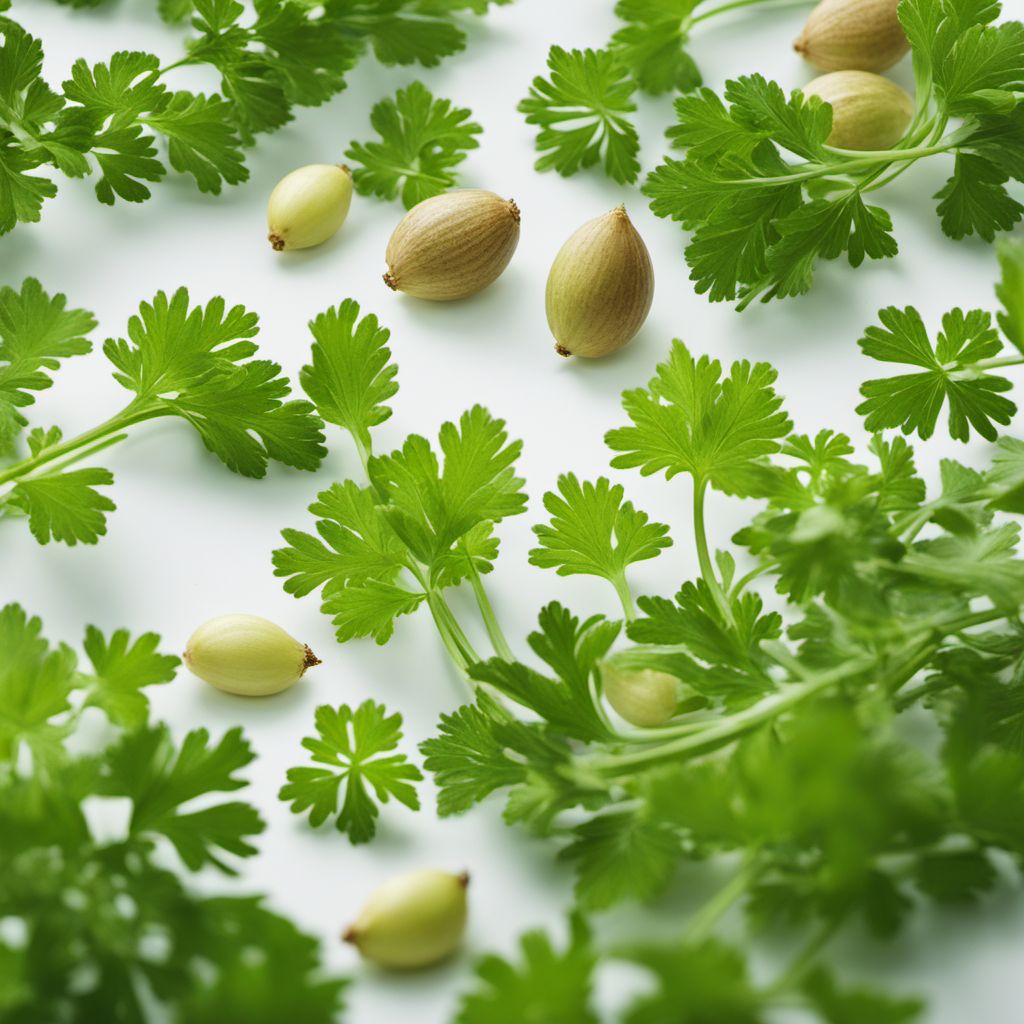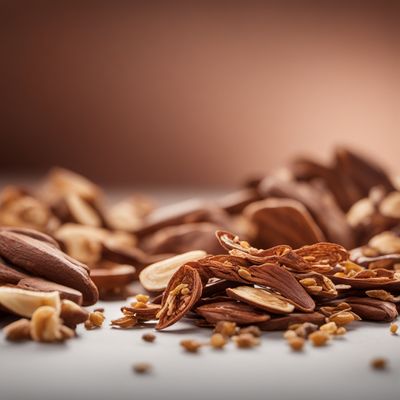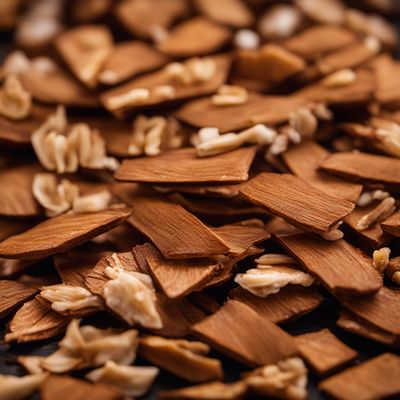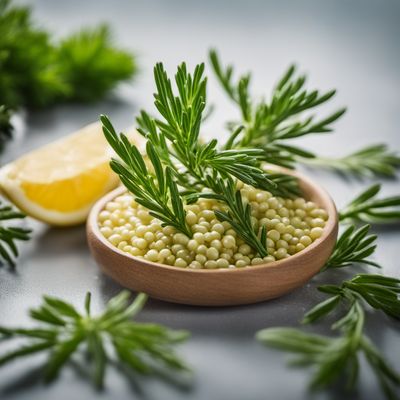
Ingredient
Parsley (infusion fruits)
The Versatile Herb: Unveiling the Infusion Fruits of Parsley
Parsley, scientifically known as Petroselinum crispum, is a biennial herb that belongs to the Apiaceae family. It features flat or curly leaves that are bright green in color, with a delicate yet distinct aroma. The leaves have a slightly bitter taste, reminiscent of celery, and a crisp texture. Parsley's infusion fruits, also known as parsley seeds, are small and round, with a dark brown color and a strong, aromatic flavor. These infusion fruits have a warm, earthy taste that adds depth to both sweet and savory dishes. They are often used as a spice or seasoning, providing a unique twist to various culinary creations.
Origins and history
Parsley is believed to have originated in the Mediterranean region, specifically in the eastern Mediterranean and western Asia. It has a rich historical background, dating back to ancient times. The ancient Greeks and Romans considered parsley as a symbol of victory and used it to adorn their athletes and heroes. It was also used in ancient medicine for its perceived medicinal properties. Over time, parsley spread to other parts of the world, and today it is cultivated globally for its culinary and medicinal uses.
Nutritional information
Parsley is a nutritional powerhouse, packed with essential vitamins and minerals. It is an excellent source of vitamin K, vitamin C, vitamin A, and folate. It also contains significant amounts of iron, calcium, potassium, and antioxidants. With its low calorie content and high nutrient density, parsley is a valuable addition to a healthy diet.
Allergens
Parsley is generally well-tolerated and not commonly associated with allergies. However, individuals with known allergies to other plants in the Apiaceae family, such as celery or carrot, may also be allergic to parsley. It is advisable to exercise caution and consult a healthcare professional if you have known allergies or sensitivities.
How to select
When selecting parsley, look for vibrant green leaves that are crisp and free from wilting or yellowing. Avoid bunches with signs of discoloration or sliminess. For infusion fruits, choose seeds that are dark brown in color and have a strong aroma. Ensure that the packaging is sealed and the seeds are not expired.
Storage recommendations
To maintain the freshness of parsley leaves, trim the stems and place them in a glass of water, similar to a bouquet. Cover the leaves loosely with a plastic bag and store them in the refrigerator. Alternatively, you can wrap the leaves in a damp paper towel and place them in a resealable bag. Infusion fruits should be stored in an airtight container in a cool, dark place away from moisture and direct sunlight.
How to produce
Parsley can be easily grown at home, either in containers or in a garden. It thrives in well-drained soil and requires ample sunlight. Sow the seeds directly into the soil or start them indoors and transplant them once they have sprouted. Regular watering and occasional fertilization will help the plants flourish. Harvest the leaves as needed, and allow some plants to flower and produce seeds for infusion fruits.
Preparation tips
To prepare parsley leaves, wash them thoroughly under cold water and pat them dry. Remove the leaves from the stems and chop or mince them according to the recipe's requirements. Parsley leaves are commonly used as a garnish, added to salads, soups, sauces, marinades, and dressings. They can also be blended into pesto or incorporated into stuffing for a burst of flavor. Infusion fruits can be ground into a powder or used whole in spice blends, marinades, or infused oils. They can also be steeped in hot water to create a flavorful herbal tea.
Culinary uses
Parsley is a versatile herb that is widely used in various cuisines around the world. It adds freshness and depth to dishes such as tabbouleh, chimichurri, and gremolata. Parsley leaves are often used as a garnish to enhance the visual appeal of a dish. The infusion fruits of parsley can be used as a spice in savory dishes, such as stews, roasted meats, and vegetable dishes. They can also be incorporated into desserts, such as cookies, cakes, and ice creams, to add a unique twist of flavor.
Availability
Parsley is commonly available in grocery stores, supermarkets, and farmers markets worldwide. It is also cultivated in home gardens and used fresh or dried in various culinary preparations.
More ingredients from this category » Browse all

China (infusion bark)
Ancient Bark Elixir

Lapacho (infusion bark)
The Healing Elixir from the Forest

Hibiscus (infusion seeds)
The Vibrant Infusion

Horse-chestnut (infusion seeds, bark)
The Majestic Remedy

Soap-bark tree (infusion bark)
The Natural Cleanser: Soap-Bark Tree

Sweet corn (stigmas styles)
The Golden Threads: Sweet Corn Stigmas Styles

Quassia (infusion bark, wood)
Bitter Elixir from Nature's Pharmacy

Witch hazel (infusion bark)
Nature's Astringent

Cupuaçu
The Exotic Delight: Cupuaçu - A Tropical Treasure for Culinary Adventures

Condurango (infusion bark)
The Enigmatic Condurango: A Bark with a Story

Fir (infusion shoots)
Exploring the Aromatic World of Fir Infusion Shoots

Fragrant sumac (infusion bark)
The Aromatic Essence: Fragrant Sumac


